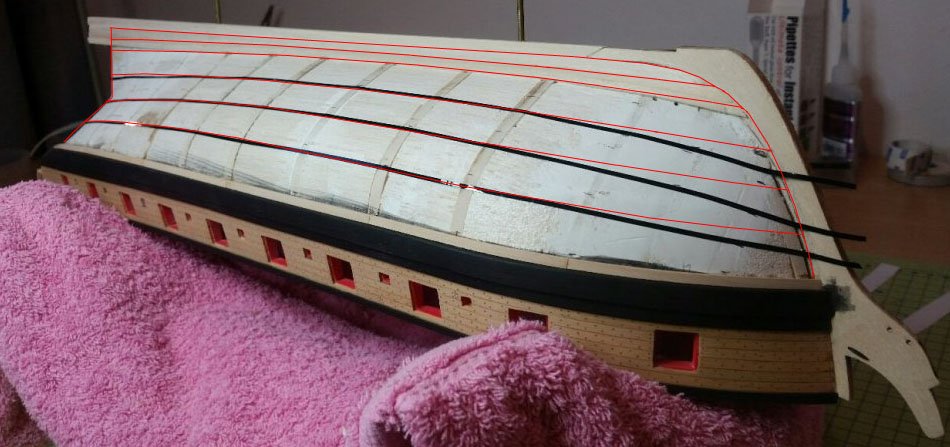-
Posts
13,290 -
Joined
-
Last visited
Content Type
Profiles
Forums
Gallery
Events
Everything posted by druxey
-
Clinker and clench are different names for the same thing! I remember the advertisements in the '70's in Model Shipwright for this kit. Couldn't afford it back then, but lusted after one!
- 102 replies
-
- speedy
- model shipwright
-
(and 1 more)
Tagged with:
-
Absolutely, Shipman! I'm sure I too, with my faults and foibles, qualify for that diagnosis as well....
-
I wonder whether the treasure trove of recently discovered Black Sea wrecks may hold the key to some of these mysteries. I understand that they will be examined more closely this summer....
-
I remember, as a kid, seeing him and his models in London at Model Engineering exhibitions. I was too young to truly appreciate his work then. He was an odd character who today may have been diagnosed as being on the autism spectrum.
-
A fascinating way to solve the engraving issue without photoetching! What diameter bit did you use, Gerald?
- 281 replies
-
- falls of clyde
- tanker
-
(and 2 more)
Tagged with:
-
Nice going, Ed. And congratulations on the 100th page of this thread!
- 3,618 replies
-
- young america
- clipper
-
(and 1 more)
Tagged with:
-

Pandora by marsalv - FINISHED - 1:52
druxey replied to marsalv's topic in - Build logs for subjects built 1751 - 1800
Lovely! But don't forget the water holes in the spritsail. -
Oh dear, Keith. Hopefully the new and revised version will have zero runout!
-
Erik: there are so many things to consider when lining out. Please read the article (link below) to better understand what you need to do. Also, there are a lot of boat-builders in Scandinavia. Perhaps you could talk to one of them as well! https://modelshipworld.com/index.php?/search/&q=a primer on planking&sortby=newest&search_in=titles
-
It is hard to tell at long distance, but you are having some problems Erik. Before you go further, may I suggest you replace the black tape with thread? This minimizes the thickness issue. I'm attaching a version of your photo with red lines showing roughly how the lines should go. Note that the lowest planks at the bow, especially the garboard, end earlier to allow enough room for the rest of the planking. At the stern the lowest planks widen at the stern post. Try again and play with the thread positions until you get smooth curves from every angle of view. Have you read A Primer for Planking, pinned on this site?
-
Well, that's grand, E&T! Congratulations!
- 346 replies
-
- terror
- polar exploration
-
(and 2 more)
Tagged with:
-
The rope you refer to is called a strop. It is basically a single loop of rope lashed together between the block and hook. There are many ways of making this loop up at scale size. Perhaps the simplest way is to lash a length of line into a small loop, capturing the hook first. Then take the two ends of the line around the sides of the block, glueing them. Cut and glue the line ends neatly at the top of the block. Usually hooks engage an eyebolt. I suspect the wire is twisted to make a stem. Is that why the hole required is larger than the diameter of the wire?
- 5 replies
-
- tiller rigging
- blocks
-
(and 1 more)
Tagged with:
-
Miniature chain is available from several sources online. I just checked and there is as fine as 40 links to the inch in brass.
-
No formula required! Draw two straight lines parallel to each other, almost the width of your paper apart. Draw a number of points along one line slightly less far apart than the narrowest plank. On the other line, draw a number of points slightly wider than the widest plank. Join the lines up across the sheet and voila! Your fan. Of course, you could simply start from a single point on one side of the paper instead.
-
Aiee! You are including every possible running line? Incredible, Ed.
- 3,618 replies
-
- young america
- clipper
-
(and 1 more)
Tagged with:
-
Dilute washes of acrylic paint will tone the material nicely.
About us
Modelshipworld - Advancing Ship Modeling through Research
SSL Secured
Your security is important for us so this Website is SSL-Secured
NRG Mailing Address
Nautical Research Guild
237 South Lincoln Street
Westmont IL, 60559-1917
Model Ship World ® and the MSW logo are Registered Trademarks, and belong to the Nautical Research Guild (United States Patent and Trademark Office: No. 6,929,264 & No. 6,929,274, registered Dec. 20, 2022)
Helpful Links
About the NRG
If you enjoy building ship models that are historically accurate as well as beautiful, then The Nautical Research Guild (NRG) is just right for you.
The Guild is a non-profit educational organization whose mission is to “Advance Ship Modeling Through Research”. We provide support to our members in their efforts to raise the quality of their model ships.
The Nautical Research Guild has published our world-renowned quarterly magazine, The Nautical Research Journal, since 1955. The pages of the Journal are full of articles by accomplished ship modelers who show you how they create those exquisite details on their models, and by maritime historians who show you the correct details to build. The Journal is available in both print and digital editions. Go to the NRG web site (www.thenrg.org) to download a complimentary digital copy of the Journal. The NRG also publishes plan sets, books and compilations of back issues of the Journal and the former Ships in Scale and Model Ship Builder magazines.



